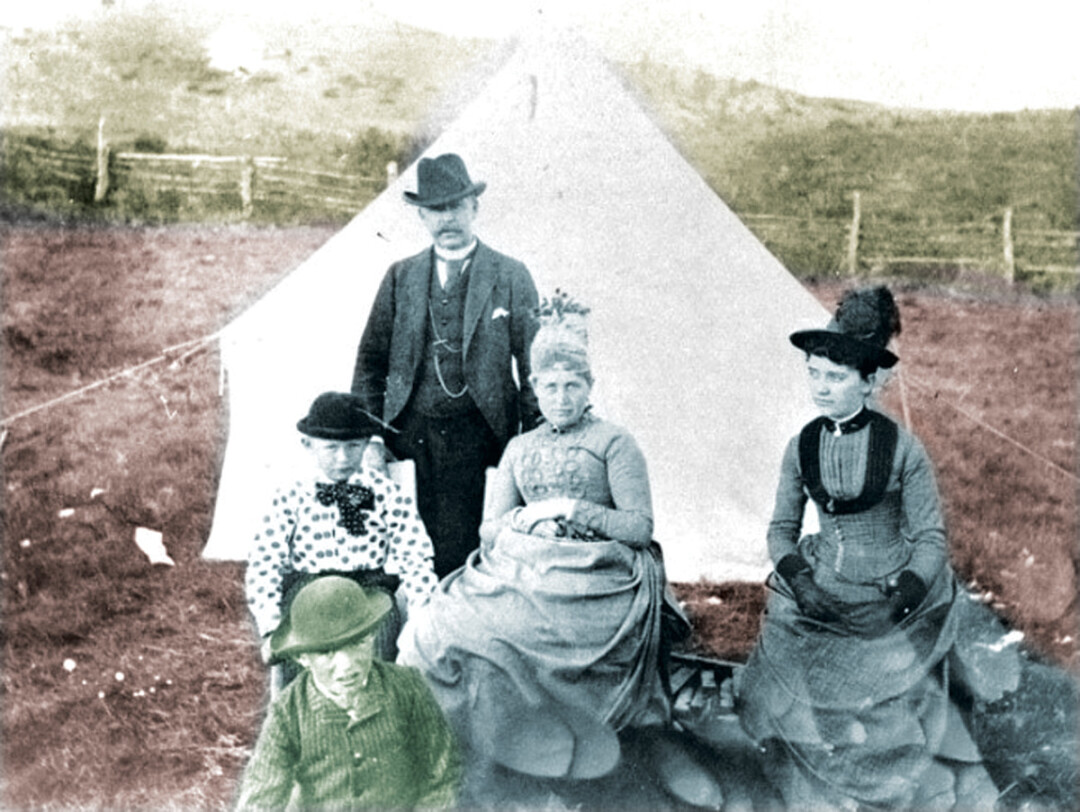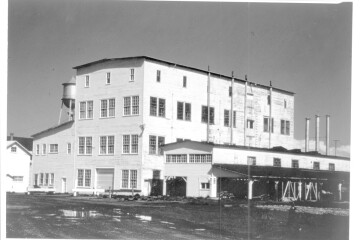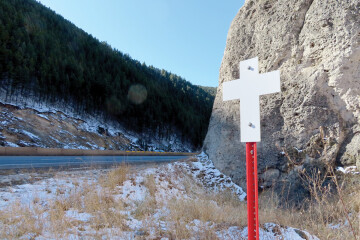A Taste of History Exploring Bozeman’s Past Through Recipes

Every holiday with my family is marked by the anticipation of the custard kuchen. The almost-sacred recipe has been handed down by my great grandmother. Kuchen’s a sort of fruit and custard dessert, lined with a buttery pie crust, topped with a swirl of cinnamon and sugar. Always served cold. Our favorite flavor’s strawberry rhubarb. It’s heavenly.
I never knew my great-grandmother. And as the years go by, the people who actually knew her grow older, and there’s less and less information to know, fewer memories to hold onto. The photographs get worn. The letters and papers start to crumble.
But cooking- kneading the pie dough, stirring the custard- it’s a way to connect with someone I’ve never met. It’s a way to take my family’s history and make it have some sort of application in my life. It’s a way to get insight- however small- into what my great-grandmother’s life on the desolate prairieland of North Dakota might’ve been like.
The way we interact with food- the foods we use, the methods we have to cook them, even what food we pick and choose to create- can tell us a lot about the past. Examining food from Bozeman’s early history, where recipes could be dictated by limited food sources, cooking utensils, and available help in a rough-and-tumble frontier town, recipe history is particularly interesting. As we examine historical recipes from Bozeman and beyond, a composite of people’s daily lives and their daily struggles begin to appear. Professor Mary Murphy made me aware of two extraordinary cookbooks found in Bozeman: Emma Willson’s Cookbook from 1916, and Belle McDonald’s cookbook from 1913. Emma Willson was the wife of Lester S. Willson, a prominent Bozeman businessman and board member of the Agricultural College of Montana. Their son, Fred Willson, was an architect on over 1,000 buildings in the early 20th century, including the Baxter Hotel, the Ellen Theatre, and the Student Union building. Belle McDonald, one of only a handful of African American women in Bozeman in the early 20th century, was the granddaughter of two former slaves who moved to the Gallatin Valley area in 1864. The cookbooks these women left behind, hand-copied recipes from family and friends, make the readers play detective with the clues left behind, piecing together information about the daily life of a Bozemanite woman in the early 20th century.
Cookbooks are, “…a very democratic document generated by women,” says Dr. Mary Murphy, professor of women’s history and food history at Montana State. “Women are, in many cases, invisible in history- especially ordinary women. It’s still hard to get at the lives of ranch women, miner’s wives, waitresses, and women who live in small towns, because they tended to not leave a lot of records. So, having these community cookbooks, where people are contributing these recipes, and they sign it, it’s sort of a way to get a mosaic picture of a community, of the women in a community, that they’ve all contributed all these little bits of food and knowledge in supporting their family and community.”
While reading Emma Willson’s cookbook, the reader is struck by the multitude of women’s names that are attached to a particular dish. Descriptions of “Miss Penfield’s Orange Cake” or “Mrs. Donaldson’s Sponge Cake” cover the pages in Emma Willson’s scrawling cursive. There are several recipes that bear the last names of Bozeman’s most prominent early citizens. “Miss Bogert’s Jelly Cake” may be referring to a family member of John “Vesuvius” Bogert, Bozeman’s first mayor. Another recipe, “Danish Pudding (Mrs. Koch),” offers more concrete clues as to who was behind the recipe. Mrs. Koch is almost certainly Laurentze Koch, wife of prominent banker Peter Koch (for whom Koch Street is named). The Willsons, Bogerts, and Kochs, by virtue of similar socioeconomic status and living in a small town, would have moved in the same social circle, making recipe swapping possible. The Kochs were also Danish immigrants to Bozeman, making it quite plausible they would have a Danish pudding recipe. Connecting the dots between the recipes, the women, and factoids of Bozeman history becomes almost a savory treasure hunt of sorts.
Emma Willson’s usage of “Mrs.” and “Miss” in her cookbook also reveals a small, but telling aspect of Bozeman life in the early 20th century. While nearly all her recipes containing a name use the honorific title of “Mrs.” or “Miss,” one recipe, “Belle’s Bread,” contains only a first name.
In Belle McDonald’s cookbook, the same recipe is included, with very small changes to the ingredient measurements, and simply labelled “Bread.” The name Belle, the instructions, the ingredients – all point to Belle McDonald, so why not credit “Mrs. McDonald”?
Omitting the title of “Mrs.” or “Miss” from recipes attributed to black women was a common occurrence in early cookbooks. A black woman’s cooking was often seen as lower in status and prestige than a white woman’s cooking, implicitly lowering their status in society. Leaving the honorific title of “Mrs.” or “Miss” off recipes, indicates, “A familiarity that’s not respectful,” as Professor Murphy would put it. While combing through these recipes for clues about Bozeman’s pioneer women, it’s important to realize that while there is often little information about white women, there’s even less written documentation about women of color.
It’s also important to recognize the historical information we can glean from recipe study is often not concrete. “You don’t want to go too far. You have to recognize the limit of your sources,” Professor Murphy says. Like many aspects of historical examination, it relies on a mix of solid fact and smart inferences. Professor Murphy explains it best as to why studying cookbooks and recipes can be so valuable, and how food history is critical: “To me, food is just another lens to look at social history or gender history…There have historically been very few professional opportunities or well-paying jobs for women. And yet we live in a society where people are often valued for the salary they make or the position they have. How did all the women who weren’t elected to Congress, or weren’t the head of a Women’s Federation Club, how did they get satisfaction from their work, or recognition in their community for something? And I started thinking about their connection to food, and this idea of recipes as a kind of currency and that’s where they’d demonstrate their knowledge and skill. It’s kind of a way for me to look at the lives of women in Montana in a lens I hadn’t explored before.”
Some people might find figuring out that Mrs. Koch gave Mrs. Willson a Danish pudding recipe extremely boring. They might think connecting “Belle’s Bread” with Belle McDonald is a pointless pursuit. But it’s little details like these that allow us to make a composite portrait of the past. Often, what makes history come alive isn’t the big events, but the tiny specifics that reveal something about daily life. It’s things like your great-grandmother’s kuchen recipe, a well-thumbed family cookbook, the scrawling cursive on the page - that make the past a vibrant, lively, continual entity.
If you have any old cookbooks, recipes, menus, or even photographs of restaurants of Gallatin Valley you think would make a valuable contribution to creating a portrait of Bozeman’s food history, please send an inquiry to mmurphy@montana.edu. If you would like to read the cookbooks referenced here for yourself, both are digitized online at https://archiveswest.orbiscascade.org/ark:/80444/xv773863/op=fstyle.aspx?t=k&q=belle+mcdonald and https://mtmemory.oerg/digital/collection/p16013coll70/id/455/rec/2.



